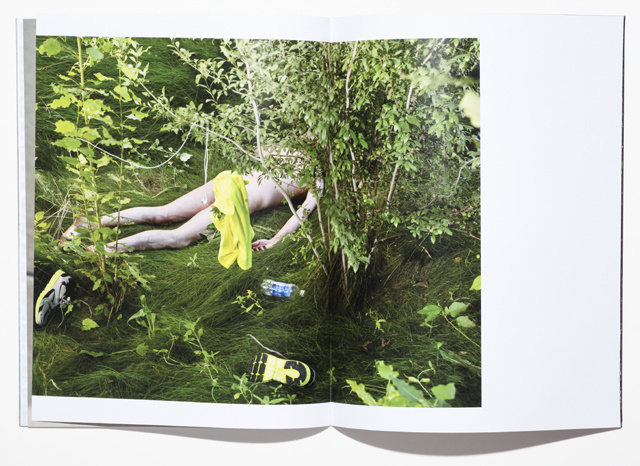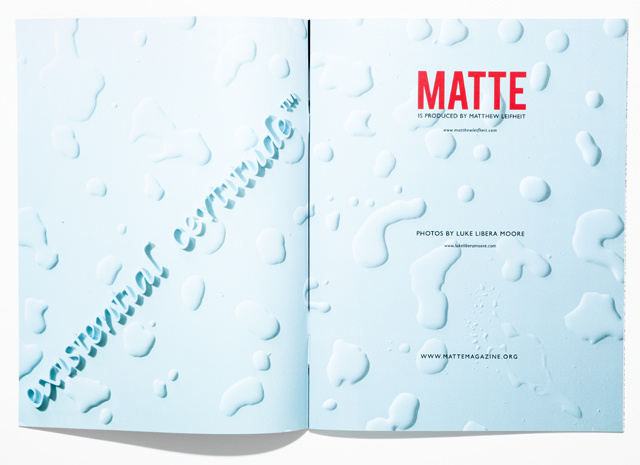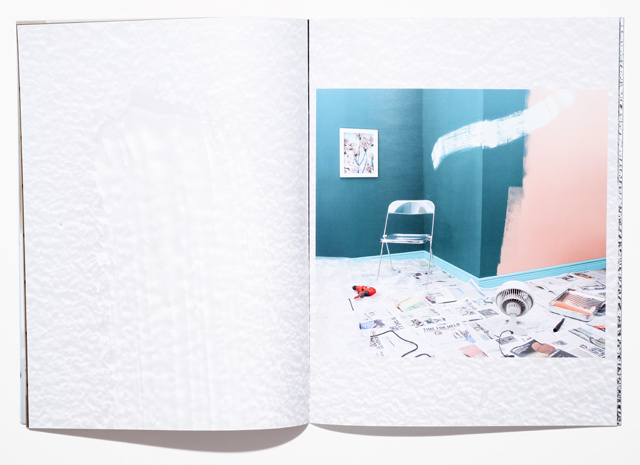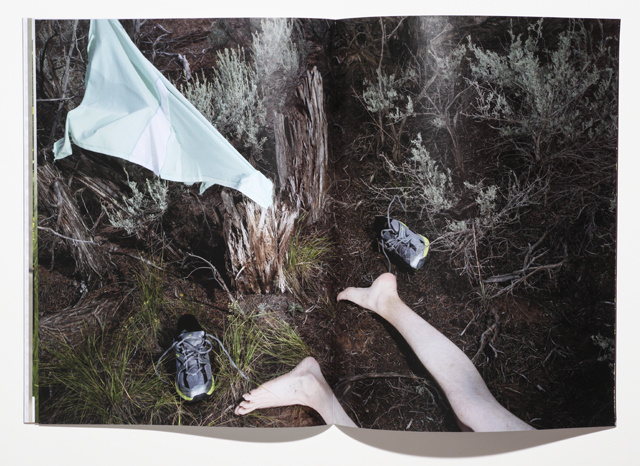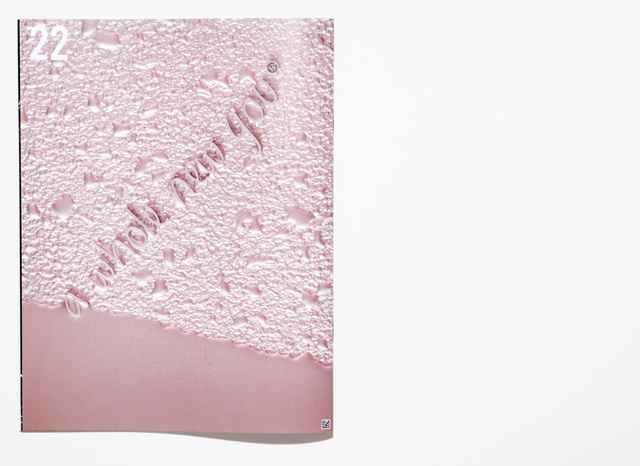
Writers are traditionally very bad singers. Their voices shake from insecurity and malnourishment, and even the ones with a velvety-smooth reading voice couldn’t carry a tune in a bucket. But Scott McClanahan is an exception to this rule. If you’ve ever seen him in person, you know there’s something different in his bones. I’ve watched this West Virginia boy silence a whole bar full of drunkards by belting out a spontaneous a cappella number more than a few times. Then, while the crowd is busy scraping their jaws off the floor, he likes to slip out the back before anyone can ask for an encore.
Now McClanahan’s musical prowess has found a home alongside his growing library in the form of a 7" record from one of the most respected independent labels around. This month, Fat Possum Records and Tyrant Books will release a limited package featuring Scott’s two-man folk band, Holler Boys, along with a copy of his latest novel, Hill William. The record/book combo is available in an edition of 300, signed and numbered, as well as an audiobook narrated by McClanahan himself for those who buy online.
I got together with Giancarlo DiTrapano, publisher of Tyrant Books, to learn more.
VICE: How did Tyrant get hooked up with Fat Possum?
Giancarlo: Fat Possum is based in Oxford, Mississippi. I had been down there a few times with some Tyrant writers on reading tours through the South, and we always stopped in Oxford to read at Square Books. Michael Bible hosted us in Oxford and kept talking about these music-label guys he said I had to meet. I met Steven Bevilaqua (who works at Fat Possum), and we became fast friends. Through Steven, I met the founder and head of the label, Matthew Johnson. They come to New York a lot, so we started hanging out when they were in town. Matthew is a big fan of Scott's writing, and when I played him this one Holler Boys song that I like, he had the idea to do this package thing.
You were one of the first people backing Scott McClanahan, who has all but blown up everything over the past year or so. You guys are both from West Virginia. Do you remember the first thing of his you read? What is it about him?
One day I hit play on a YouTube clip of Scott reading “Kidney Stones,” turned the volume up, and walked away from my computer. As soon as I heard his voice I knew he was from where I grew up, so I paid attention. And I was blown away. So I heard him read before I ever read him on the page. Then the first time I read him I remember thinking that he was really great. He had something kind of special, you know? But I also thought that he needed a fucking editor—and, more specifically, that he needed me as an editor. We work incredibly well together. I imagine that being as close of friends as we are helps because we are always honest with each other.
But what is it about him? Hm. Tough question. I think Scott's gift is being so educated and well-read without letting any of it influence him as a writer. His writing, like any good writing, has that thing that when you read it, you just know no one but him could have written it. He really bleeds into his writing. And even though he says he plagiarizes a lot, he knows exactly who and how to plagiarize. Being a good thief and knowing what to steal (or appropriate) is just as rare a talent as knowing how to write.
Sometimes I wonder why anyone gets into writing or selling or publishing books at all. Can you remember what it was that got you? Do you still feel it?
I put on a good show in public, and am considered kind of gregarious and carefree. Truth is, though, I have a pretty grim outlook on life. Sometimes I think I am only into literature because it's the thing that I hate the least about the world. Or that it's the one thing that just may wind up mattering somehow. But other times I still feel it, the excitement that was there when I first started publishing. When I think about how I got books like Eugene Marten's Firework or Marie Calloway's What Purpose Did I Serve In Your Life into so many people's heads, then I feel it. To me, the books I publish are beautiful (both inside and out), and by printing and selling them, I'm disseminating beauty. There is not a bad thing about that.
I recently calculated that I've published/printed somewhere between 25,000 and 30,000 books. Small potatoes for some, but besides the occasional intern and hired freelancer, I put out those books alone. I busted my ass, lost a lot of money (even sold my house in New Orleans), and still happened to have a good time doing it.
But most of the time, yeah, it sucks. I just wish the writers today were a little more carefree and less reserved. It's like, I'm not even that big of a fuck-up at all—at least compared to a lot of people I know—but I'm forever known as the "bad friend" who wives/girlfriends don't want their husbands/boyfriends staying out with late at night.
What's lined up for the future of Tyrant?
Got the debut novel from Atticus Lish coming out in fall 2014. It's called Preparation for the Next Life, and it's going to do incredibly well. Atticus strikes a note in the very first line and then holds it, never letting it falter, for the next 270 pages. Do you know how hard that is? (Well, I'm sure you know, but most others don't.) In all seriousness, I'd be surprised if it doesn't win the National Book Award. The heart and mind of Atticus Lish are without parallel, and the story he tells in this novel is wholly unique. This sounds like a heaping platter of cliché nachos with extra cheese, but reading Atticus's book made me a better person. It awakened a part of me, and my worldview has been altered permanently.
Tyrant Books also recently acquired Scott McClanahan's next two books. The first one is coming in spring 2015 (tentatively titled, The Sarah Book), and the second will come soon after that. We’re also reissuing Stories V! by McClanahan and publishing a collection of his interviews. I'm just kind of tagging all of his shit with the Tyrant logo, pretty much. I’ve got some other things in the works too, just can't talk about them yet.

----------
I also caught up with Scott McClanahan to ask him a bit about the jump from literary waters to his debut musical release with one of the most respected indie labels around.
VICE: I think that every time I've seen you read you've managed to incorporate music into it, either by recordings or singing yourself. Have you been writing music for a long time?
Scott: Yeah, Chris Oxley and I have been doing this music thing for a while now. We even tried to do a black magic ritual a few years ago by burning a bible (on our way to see you, actually), but I don’t know if it worked. We did it because we wanted to be pop stars. But then our wives left us, and we got kicked out of our houses, and we lost our families. We had suicides in our families and car crashes, and I almost died from the swine flu. So maybe it worked. It’s nothing to mess with, that’s for sure.
It’s like what Anton from the Brian Jonestown Massacre says: I would have sold my soul to the devil, but the line was too long.
What's the story with this song, your debut with Fat Possum?
It’s a melody we stole from the gospel singer Washington Phillips. And then we came up with some new lyrics. I think it has all the key elements that make up a good song—sucking, fucking, pregnancy, praying, and God.
We even put out a homemade album called Holler Boys’ Greatest Hits a few years ago.
We found out that if you call something greatest hits—then you don’t have to worry about it actually being a hit. It’s like how parents could save a shit-ton of money for a college education if they just named their child Doctor instead of giving them a first name like William or Eddie.
Of course, we’ve always loved that homemade sound. Maybe it’s the West Virginia in us. You know Daniel Johnston and Hasil Adkins are from here? Hasil even died because somebody ran over him in his front yard with a four-wheeler. I can’t think of a more West Virginia way to die.
On another note, you recently tried to quit the Morning News Tournament of Books, and yet Hill William won the first round anyway. What makes that kind of promotion feel so shitty?
I figure it’s a bunch of different things. I think I’m just sick of me. I’m sick of my voice. I’m sick of my face. I’m sick of what a scoundrel I can be. Sometimes I’m just a mouthy little punk who needs to keep his mouth shut. But these ToB folks were ruining my Goodreads score.
Click here to buy the Hill William/Holler Boys package
Follow Blake Butler on Twitter.

